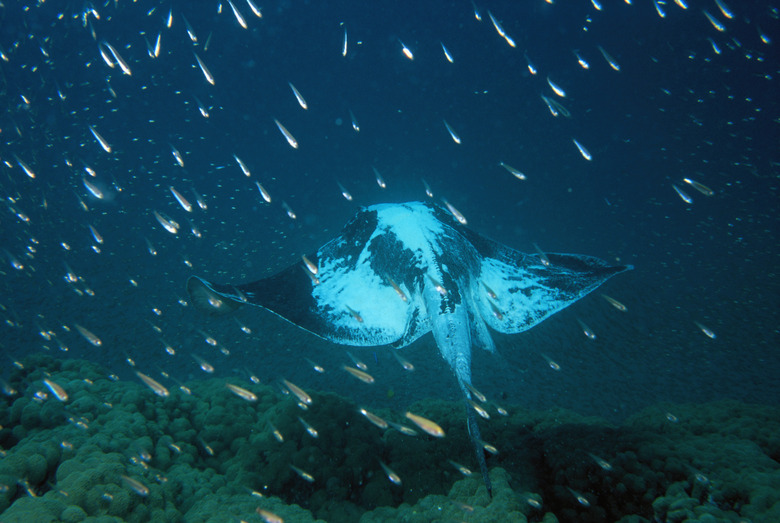Ecological Role Of The Spider Crab
If you stumble upon a spider crab while scuba diving or walking around a tidal pool, you might not even notice it at first. These crabs with long spider-like legs are the masters of camouflage, attaching barnacles, seaweed, algae and broken shells to sticky hairs all over their bodies to blend in with their surroundings. Ecologically they play an important role as scavengers, and they serve as prey for larger marine life.
Scavengers of the Sea
Scavengers of the Sea
Spider crabs benefit a marine ecosystem by eating dead animal and plant material. Spider crabs have poor eyesight. They use little sensing organs on their legs, similar to taste buds, to help them find food. Younger spider crabs can attach themselves to cannonball and moon jellyfish and share the food brought in by their host. Larger spider crabs move slowly along the ocean floor and use their strong claws to crush open dead starfish and shellfish.
A Predator's Lunch
A Predator's Lunch
Spider crabs are not only predators of the dead, but they also play an important role as prey for larger fish and invertebrate animals. Large fish and invertebrates such as grouper, octopus and stingrays dine on spider crabs. For the spider crab, larger sea life are not their only predators — humans are known to also enjoy them for lunch. If you travel to Japan, you might find a Japanese spider crab on the menu as sushi or as a salted and steamed delicacy.
Pollution Survivor
Pollution Survivor
Spider crabs are capable of tolerating the low oxygen levels found in polluted waters. Other species of crab and crustaceans can increase beyond normal size when dwelling in waters polluted with carbon by factories and power plants, using the excess carbon when they molt to make a new shell. While it's not known if spider crabs actually play a role in helping clean up polluted waters, one can't help wonder if their ability to survive in these poor environments as they scavenge animals killed by pollutants could have some ecological long-term benefit in cleanup efforts.
Diversity
Diversity
There are several species of spider crabs found throughout the world. Spider crabs common to salty North American waters are about the average size you'd expect a crab to be, with a body of an adult being up to 10 centimeters (4 inches) wide. You can find giant spider crabs, however, living in deeper and colder waters, such as off the coast of Japan. Japanese spider crabs can weigh up to 20 kilograms (44 pounds) and the leg span can reach up to about 4 meters (13 feet). These monster-size crabs are believed to live to be 100 years old or more.
References
- University of Rhode Island: Environmental Data Center: Spider Crab (Libinia emarginata)
- Smithsonian Marine Station at Fort Pierce: Libinia dubia
- Chesapeake Bay Program: Common Spider Crab
- Oregon Coast Aquarium: Japanese Spider Crab
- Shizuoka Sushi & Sashimi: Crab Species 3: Japanese Spider Crab/Takaashigani
- Environmental Leader: Supersized Crabs Bulking Up on Carbon Pollution
- Oceana.org: Japanese Spider Crab
Cite This Article
MLA
Heeter, Kris. "Ecological Role Of The Spider Crab" sciencing.com, https://www.sciencing.com/ecological-role-spider-crab-22549/. 24 April 2017.
APA
Heeter, Kris. (2017, April 24). Ecological Role Of The Spider Crab. sciencing.com. Retrieved from https://www.sciencing.com/ecological-role-spider-crab-22549/
Chicago
Heeter, Kris. Ecological Role Of The Spider Crab last modified March 24, 2022. https://www.sciencing.com/ecological-role-spider-crab-22549/
